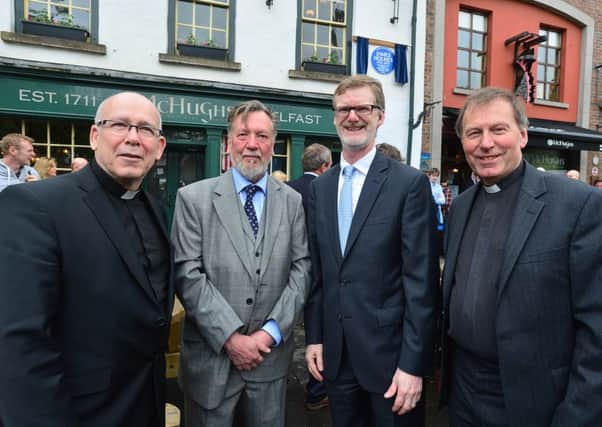Plaque to mark Belfast's first US Consul 220 years ago


The unveiling occurred on the anniversary of the US president’s signing of the papers to appoint James Holmes as Consul to the Port of Belfast on May 27, 1796.
By the late 18th century, Belfast had become a major seafaring gateway, and the dual activities of emigration and trade justified the city’s place among a small group of US consular representations around the world.
Advertisement
Hide AdAdvertisement
Hide AdSince Mr Holmes’ appointment, over 50 individuals have maintained a continuous consular presence in Belfast, making it the second oldest continuously running US Consulate in the world.
Yesterday a blue plaque was erected at McHugh’s Bar and Restaurant, close to where Mr Holmes had his offices at 11 Chichester Quay.
Maud Hamill of the Ulster History Circle told the News Letter that Belfast was a “fledgling” town in the 18th century.
“James Holmes was born in 1753 to John Holmes, a merchant, and Mary Wilson,” she said.
Advertisement
Hide AdAdvertisement
Hide Ad“James and his brother John had a lucrative import-export business practically opposite where McHugh’s Bar and Restaurant is today.”
They brought in tar and tallow from Russia, and wheat, barrel parts, timber and flaxseed from the US. They also exported linen and linen seeds.
His brother John went on to become a famous banker and James then became partner with Robert Davis from Newry – also marrying his sister, Jane Davis.
“In 1795 James was appointed president of the Belfast Chamber of Trade and Commerce but did not take up the post. Instead he took off to his brother Hugh in Philadelphia – then capital of the US,” said Ms Hamill.
Advertisement
Hide AdAdvertisement
Hide AdHe stayed there for a year and then came back, having been appointed US Consulate for Belfast by George Washington – a position he held for 19 years while his business interests continued.
He was in his post as consulate during the United Irishmen’s rising in 1798 but took no part in it.
James moved his family out to Holywood and held land, linen and milling business interests in Larne and Edenderry in Lisburn. His brother John married Isabella Patterson in Comber and they in turn had a daughter they named Isabella.
She went on to marry Henry Joy McCracken, owner of the News Letter at the time.
Advertisement
Hide AdAdvertisement
Hide AdJames died of unknown causes in Dublin in 1832 and the location of his grave is a mystery.
Why did he emigrate?
It remains a mystery why James Holmes took off on that fateful trip to Philadephia in 1795, Maud Hamill says.
“His brother there may have advised there was an opportunity to become US consulate,” she said. “He was already wealthy and did not cultivate a high profile, but the position may have given US tax incentives for his import-export business.
Advertisement
Hide AdAdvertisement
Hide Ad“Some 250,000 people emigrated to the US in the 18th century so they would have needed representation here.
“Now in 2016 there are no wooden ships at Belfast docks, just cruise liners with Americans returning to find their roots.”